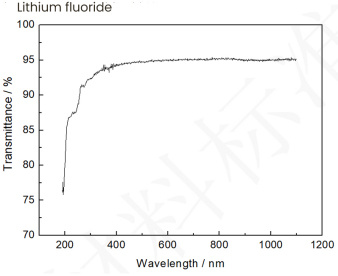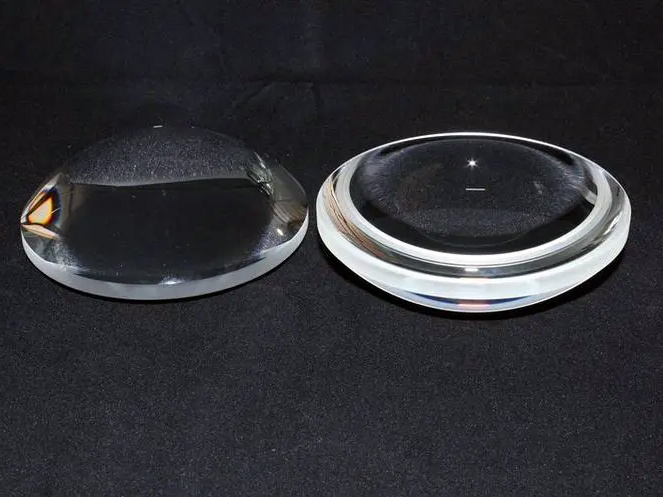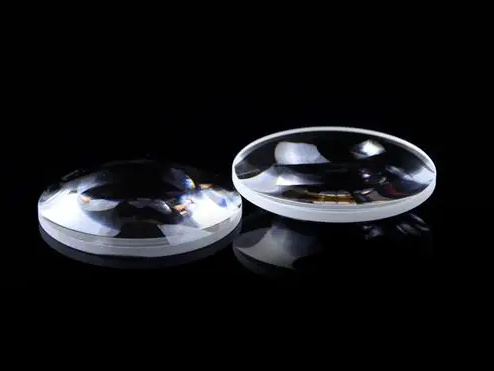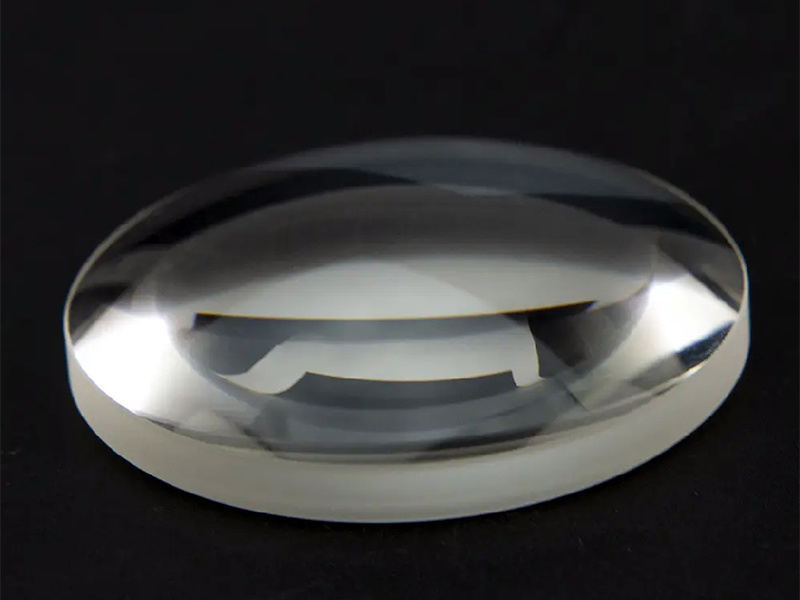Product display
Plano-convex lens





Classification:
Key words:
Plano-convex lens
E-mail:
- Product Introduction
- Product Parameters
- Transmittance
- Product Picture
- Processing technology
- Optical use
- Custom Specifications
- Technical Answers
-
- Commodity name: Plano-convex lens
A plano-convex lens is a commonly used optical element, which has a flat surface and a convex surface, and is usually used to change the shape and size of a light beam.
A plano-convex lens is a commonly used optical element, which has a flat surface and a convex surface, and is usually used to change the shape and size of a light beam. This kind of lens has a wide range of applications in optical systems, such as beam expansion, imaging, beam collimation, focusing collimation, beam collimation point light source, etc.
A plano-convex lens is made of such an optical crystal material. With a wide transmission band (110~6,600nm) and high transmittance, it is particularly suitable for the manufacture of infrared lenses and windows. At the same time, it also has excellent infrared characteristics, in the infrared band, especially the mid-far infrared to long-wave infrared band (such as 3 ~ 5μm and 8 ~ 14μm), the transmittance is high, so it is often used as infrared laser, infrared night vision device window material.
In the manufacturing process, plano-convex lenses require precise machining and polishing processes to ensure their surface quality and optical performance. In addition, in order to improve transmittance and anti-reflection performance, a plating treatment is generally required.
-
Material Data Sheet Material Data
optical characteristic Optical Properties
Transmission Range through Range
0.11-7μm
Transmittance Transmittance
> 94.8% @ 0.6μm
reflection loss Reflection loss
5.2%@0.6μm(both surfaces)
吸收系数Absorption Coefficienet
5.9 × 10-3@4.3 μm
Structural Structure
Cubic Crystal System
dissociation surface Cleavage Planes
<100>
Physical characteristics Physical Properties
Density Density[g/cm3]
2.639
熔点Melting Point [℃]
848
热导率ThermalConductivity [W/(m×K)]
11.3 @ 314K
Thermal expansion coefficient Thermal Expansion [10-6/K]
37.0 @ 283K
Knoop Hardness [kg/mm2]
415
比热容Specific Heat Capacity [J/(kg×K)]
1562
Dielectric constant Dielectric Constant
7.33 @ 1 MHz
Young's Modulus Young's Modulus (E) [GPa]
64.79
Shear Modulus Shear Modulus(G) [GPa]
55.14
Bulk Modulus Bulk modulus(K) [GPa]
62.03
Poisson coefficient Poisson Coefficient
0.22
Chemical characteristics Chemical Properties
Solubility Solubility / g/L
2.7g @ 20 ℃
分子量Molecular Weight / g/mol
25.9394
-


-





-
The information is being sorted out......
-
Use
Related industries
beam expansion
Laser Technology, Optical Research
Imaging
Photography, camera equipment manufacturing
beam collimation
Laser processing, optical instrument manufacturing
focus collimation
Laser processing, optical instrument manufacturing
Beam collimation point light source
Laser processing, optical instrument manufacturing
-
The information is being sorted out......
-
How does the plano-convex lens focus more
1. Adjust the position and angle of the lens: Ensure that the lens is correctly installed and positioned so that it is accurately aligned with the light path between the light source and the target object. Fine-tune the angle of the lens to maximize the focus of the light.
Select the appropriate lens curvature: the smaller the radius of curvature of the lens, the stronger its ability to converge light. Therefore, selecting a plano-convex lens with a smaller radius of curvature can enhance the light-condensing effect.
Optimize the distance between the light source and the target object: Adjust the distance between the light source and the target object so that the light can converge on the target object after passing through the lens. A suitable distance will ensure that the light converges at the focal point of the lens, thereby achieving a better light gathering effect.
4. Use high-quality optical materials: Selecting high-quality optical materials with high refractive index and low dispersion can improve the condensing performance of plano-convex lenses. These materials can refract and focus light more effectively, reducing the scattering and loss of light.Use of Plano-convex Lens
Plano-convex lens is a positive lens in optical system, which is mainly used for beam expansion, imaging, beam collimation, focusing collimation, point light source collimation and other purposes. It has a positive focal length and is often used in applications such as imaging or beam collimation. The coated lens is also widely used in visible and near-infrared applications.The difference between a plano-convex lens and a convex plano lens
A plano-convex lens is a lens that is flat on one side and convex on the other. It mainly has the functions of beam expansion, imaging and focusing. When a plano-convex lens is used for imaging, it can focus the object into a virtual image, or it can image the object into a real image. In addition, plano-convex lenses can also be used for beam collimation and beam expansion, as well as point light source collimation and other applications.
A convex plano lens refers to a lens in which both sides are convex. It is mainly used for collimating divergent beams or focusing complex optical paths. The convex plano lens is usually placed behind the plano-convex lens to shorten the focal length without degrading the optical system performance. It is also often used to reduce or eliminate the spherical aberration or differential of the attachment generated when coupling between lenses.Relationship between focal length and curvature radius of plano-convex lens
There is an inverse relationship between the focal length of a plano-convex lens and the radius of curvature. When the radius of curvature increases, the focal length decreases; conversely, when the radius of curvature decreases, the focal length increases.What is the general radius of curvature of a plano-convex lens?
Generally about 800mm, or even larger. It should be noted that the radius of curvature of the plano-convex lens used in different experiments may be different, and the specific value depends on the actual needs and the specifications of the lens.The difference between plano-convex lens and biconvex lens
1. Morphological structure: both surfaces of the plano-convex lens are curved, one side is convex and the other side is flat. Both surfaces of the lenticular lens are convex.
2, imaging characteristics: flat convex lens mainly produces virtual image, its imaging angle is very large, so the imaging effect is particularly obvious for close range, such as correction of myopia patients. The lenticular lens is mainly used to converge the light from a point light source or transfer an image to other optical systems, which can produce real and virtual images.
3, the lens miniature: the miniature of the plano-convex lens is located on the back of the lens, while the miniature of the biconvex lens is located at the focus of the lens.
4, chromatic aberration problem: flat convex lens because there is only one curved surface, the chromatic aberration problem is relatively small. However, due to the different refraction angles of the light rays transmitted through the lenticular lens on the surface of the lens, a chromatic aberration phenomenon often occurs in the light rays transmitted through the lens, that is, the light intensities and angles of different colors change differently.focal length of plano-convex lens
1/f=(n-1)*(1/R1-1/R2)。
Where f represents a focal length, n represents a refractive index of the lens, and R1 and R2 represent two radii of curvature of the lens, respectively. This formula is called the thin lens formula of the lens, which is applied to the approximate cases of weak convex lens and thin lens. In practical applications, in order to calculate the focal length of the lens, we need to know the refractive index and radius of curvature of the lens. The refractive index of the lens can be obtained by the optical properties of the material, while the radius of curvature can be measured by the physical size and shape of the lens.Which side of the plano-convex lens faces the parallel light
When the convex surface of a plano-convex lens faces parallel light, the light rays encounter the convex surface and are refracted. According to the law of refraction, the smaller the angle between the incident ray and the normal, the smaller the angle of refraction, so the refracted ray will be deflected to the normal direction of the lens. In the case of a convex lens, the refracted rays pass through the center of the lens and spread out at the back. This means that when the convex surface is oriented toward parallel light, the plano-convex lens will cause the light to diverge.lens imaging formula
1/f=1/u 1/v
where f is the focal length, u is the object distance, v is the image distance, the convex lens is positive, and the concave lens is negative.
In addition, in the convex lens imaging law, when the object distance is greater than twice the focal length, it becomes an inverted and reduced real image. When the object distance is equal to twice the focal length, it becomes an inverted and equal real image. When the object distance is between twice the focal length and twice the focal length, it becomes an inverted and magnified real image. However, when the object distance is less than twice the focal length, it becomes an upright and magnified virtual image. In the concave lens imaging law, when the object is a real object, it becomes an upright and reduced virtual image; When the object is a virtual object, the distance from the concave lens to the virtual object is within one time of the focal length, it becomes an upright and enlarged real image; When the object is a virtual object, the distance from the concave lens to the virtual object is one time of the focal length, the image is infinitely far away; When the object is a virtual object, when the distance from the concave lens to the virtual object is less than twice the focal length, it becomes an inverted and enlarged virtual image; when the object is a virtual object and the distance from the concave lens to the virtual object is twice the focal length, it becomes an inverted and equal virtual image.
Previous Page
Next Page
Previous Page
Next Page
online message
Related Products










